White vegetables are a diverse group of produce coming in a natural white color. These vegetables are known for their subtle flavors and crisp textures, making them versatile in various culinary applications.
They are often high in fiber and vitamins, providing a substantial source of nutrients. White vegetables are also notable for containing compounds like allicin and anthoxanthins, contributing to their health benefits.
Despite their plain appearance, these vegetables play a crucial role in balanced nutrition and are integral to many traditional and modern dishes worldwide.
In this article, you can explore 35 of the most common white vegetables. By the end, you’ll discover the best cooking methods and common dishes featuring these veggies.
Get started now!
35 Common White Vegetables: An All-Inclusive List of Different Types
Below, you can explore 35 of the most common white vegetables in all shapes and types. Use the filter function to find your perfect match and discover new favorites.
Potato
- For Dishes
Potato is a tuber with a white starchy content accompanied by a slightly earthy flavor and a creamy texture when cooked. This common vegetable, typically brown or red-skinned with white or yellow flesh, is enjoyed worldwide in numerous culinary applications.
Potatoes can be boiled, baked, mashed, or fried, making them a staple in dishes like fries, mashed potatoes, and stews.
Typically, these tubers come in clusters and are harvested by simply yanking the potato plants along with their root system out of the ground to get the tubers.
Onion
- For Dishes
Onion is a bulb vegetable with a pungent flavor and crisp texture. The pungent bulb features a layered structure with a papery outer skin that can range from white to red.
Ideally, onions can be eaten raw in salads and sandwiches or cooked to add depth to soups, stews, and stir-fries. When caramelized, they become sweet and richly flavorful, enhancing dishes like French onion soup and various savory entrees.
These bulb vegetables are also popular for their ability to be stored for long periods, making them a convenient pantry staple.
Cauliflower
- For Dishes
Cauliflower is a cruciferous vegetable, boasting a mild flavor and firm, slightly crunchy texture. These heads of cauliflower are often white but can also be found in shades of purple, green, and orange.
The vegetable is used in various dishes, from being roasted or steamed as a side dish to making cauliflower rice or pizza crust. The florets are typically separated from the thick central stalk, which can also be consumed.
Garlic
- For Dishes
Garlic is a pungent and aromatic bulb widely used in cooking. Each bulb consists of numerous cloves encased in papery skin, typically crushed, minced, or sliced to release their intense flavor.
Known for enhancing the taste of savory dishes, garlic is a staple ingredient in sauces, marinades, and dressings. Aside from cooking, garlic is also valued for its preservative qualities, often used in pickling and preserving foods.
The versatility and distinctive taste make garlic essential in everyday cooking and gourmet cuisine.
White Button Mushroom
- For Dishes
White button mushroom is a common mushroom with a mild flavor and a smooth, slightly spongy texture. When cooked, these mushrooms become tender.
Available in small to medium-sized, you can easily spot them having a white cap and stem. They are often used fresh in salads, sliced into soups, sautéed with vegetables, or incorporated into sauces and casseroles.
Their subtle taste makes them a perfect addition to enhance flavors without overpowering other ingredients. White button mushrooms are also popular as a topping for pizzas and burgers, and they can be stuffed with various fillings.
White Asparagus
- For Dishes
White asparagus is a tender and mild flavored version of common asparagus but with a white appearance at the stalks. They are slightly sweet, grown underground, or covered with soil to prevent photosynthesis, which keeps them white.
The spears are thicker and more fibrous, requiring careful peeling before cooking. Furthermore, white asparagus has a pale, ivory hue and is often prized for its unique taste.
White asparagus is particularly popular in European cuisine, where it is steamed, boiled, or grilled and often served with hollandaise sauce, in salads, or as a side dish.
Jicama
- For Dishes
Jicama is a root vegetable with a crisp and juicy texture, resembling a mix between an apple and a potato. This tuber has a rough, brown exterior over a refreshing, white flesh.
Often consumed raw, jicama has a mildly sweet and nutty flavor, making it a popular addition to salads, slaws, and crudité platters. Furthermore, jicama can also be cooked, retaining its crunch in stir-fries and soups.
Usually, jicama is seasoned with lime juice and chili powder for a traditional snack in Mexico.
Cannellini Bean
- For Dishes
Cannellini bean is a type of white kidney bean noted for its creamy texture and mild, slightly nutty flavor. Originating from Italy, these beans have a smooth, oval shape and are larger than other white beans like navy or great northern beans.
They are commonly used in Italian cuisine, especially in minestrone soup, salads, and stews. The beans hold their shape well when cooked, offering a rich, protein-packed meal element.
Navy Bean
- For Dishes
Navy bean is a small, oval-shaped legume with a smooth texture and a mild, slightly nutty flavor. Renowned for its creaminess, this bean turns soft and tender when cooked in soups, stews, and baked dishes.
Navy beans are a staple in American cuisine, often used in traditional dishes like baked beans and navy bean soup. Due to their subtle flavor, navy beans can absorb the tastes of spices and other ingredients they are cooked with, enhancing the overall dish.
These beans are commonly found in dry or canned form, perfect for storing an extended amount of time in a pantry.
Lima Bean
- For Dishes
Lima bean is a legume known for its flat, crescent-shaped seeds that come in various colors, from pale green to white cream. Valued for their buttery texture and slightly sweet, earthy flavor, lima beans are a staple in cooking.
These beans become tender and creamy when cooked, making them perfect for stews, soups, and casseroles. Lima beans are particularly popular in Southern American dishes such as succotash.
They can be used fresh, frozen, or dried, even retaining the mild flavor to complement various ingredients and seasonings.
Great Northern Bean
- For Dishes
Great Northern bean is a popular legume with a smooth texture, oval shape, and white color. They come with a delicate, mild flavor and firm texture, able to absorb flavors effectively.
Great Northern beans are often used in soups, stews, and casseroles, where they provide a hearty base and creamy consistency. They are especially favored in recipes like baked beans and bean salads, and they are even used as a staple in American cuisine.
Turnip
- For Dishes
Turnip is a root vegetable with a round shape and smooth, white to purple skin. Often grown in temperate climates, turnips have a slightly peppery, earthy flavor and a crisp, firm texture when raw, becoming tender and sweet when cooked.
The flesh inside is typically white or yellowish. Turnips are versatile in culinary use, often added to soups, stews, and roasted vegetable medleys.
In addition to the root, turnip leaves are edible and nutritious, adding a slightly bitter note to dishes.
Enoki Mushroom
- For Dishes
Enoki mushroom is recognizable by its long, thin stems and small, white caps. These mushrooms are native to East Asia and are characterized by their delicate, slightly crunchy texture and mild, fruity flavor.
They are commonly used in Asian cuisine, particularly in soups, stir-fries, and hot pots, to add a subtle earthy note. Commonly, enoki mushrooms grow in clusters on tree stumps, particularly on the Chinese hackberry tree, but are also cultivated in controlled environments.
You can easily find fresh enoki mushrooms in grocery stores, typically packaged in plastic trays.
Kohlrabi
- For Dishes
Kohlrabi is a member of the cabbage family, offering a unique blend of broccoli stem and cabbage flavors with mild sweetness and peppery undertones. The vegetable features a bulbous stem, available in green, white, or purple, with large, edible leaves.
Its crisp and juicy flesh resembles an apple or radish in texture. Kohlrabi is enjoyed raw in salads and slaws for its crunch, but it can also be roasted, steamed, or sautéed.
The vegetable is a popular ingredient in European and Asian cuisines and is easy to grow in temperate climates, making it a favorite among home gardeners and farmers.
Fennel
- For Dishes
Fennel is a vegetable with a distinct anise-like flavor, often used for savory and sweet dishes. The plant has feathery green leaves and a bulbous base that is crisp and white.
When raw, the bulbous part of the fennel is crunchy and becomes tender when cooked. Fennel can be thinly sliced and added to salads for a refreshing crunch or roasted to bring out its natural sweetness.
Its seeds are also commonly used as a spice in cooking, providing a hint of licorice flavor to breads, sausages, and desserts.
Daikon Radish
- For Dishes
Daikon radish is a root vegetable with a mild flavor and crisp texture. They are long, white, and cylindrical in shape, playing an essential role in Asian cuisines.
Typical daikons are smooth and pale, while the flesh is juicy and firm. Daikon radishes are often used raw in salads and pickles, adding a refreshing crunch.
They become tender and slightly sweet, explaining why many Asian recipes boil daikon to use as a base for soups and stews. In Japanese cuisine, they are frequently grated and served as a condiment.
Parsnip
- For Dishes
Parsnip is a root vegetable closely related to carrots and parsley, featuring cream-white skin and flesh. The root has a sweet, nutty flavor, which intensifies after the first frost.
Plus, parsnips are firm and starchy, similar to potatoes, and often used for roasting, mashing, and adding to brothy dishes.
Some even puree parsnips into creamy dishes or grate them raw into salads for a crisp, slightly spicy bite. Cultivated since antiquity, parsnips thrive in colder climates, making them a staple in many European and North American cuisines during winter.
White Corn
- For Dishes
White corn is a variety of maize with pale kernels and a sweet flavor. Unlike yellow corn, it lacks carotenoids, which give the kernels a distinctive white color.
Usually, the kernels are tender and juicy, offering a crisp bite when eaten fresh. White corn is a common choice for making salads, salsas, soups, and stews.
Ideally, white corn thrives in warm climates and is harvested during the summer months.
White Shimeji Mushroom
- For Dishes
White shimeji mushroom is an edible fungus that grows in clusters, having smooth, elongated stems. This mushroom has small, rounded caps that are firm and creamy white in color.
The flavor is mildly nutty with a slight hint of sweetness, accompanied by a delicate, crunchy texture when cooked.
White shimeji mushrooms are commonly used in Asian cuisine, particularly in soups, stir-fries, and hot pots, where they absorb the flavors of the dishes they accompany.
Celeriac
- For Dishes
Celeriac is a root vegetable with a knobby, brown exterior and crisp, white flesh. This large root vegetable has a mild, celery-like flavor, nutty undertones, and a smooth, dense texture.
Often employed in soups, stews, and salads, celeriac can be eaten raw or cooked. Celeriac is particularly popular in European cuisine, where it is commonly prepared as a puree or roasted as a side dish.
Taro Root
- For Dishes
Taro root is a starchy tuber of rough, brown skin and creamy white to purplish flesh. These roots are recognizable for their mildly sweet and nutty flavor, along with a smooth and creamy texture when cooked.
Taro is widely used in Asian, African, and Pacific Island cuisines, often boiled, roasted, or mashed. It is a staple in many traditional dishes, such as poi in Hawaii, as well as various curries and stews.
The leaves of the taro plant are also edible when cooked, adding another layer of texture.
Rutabaga
- For Dishes
Rutabaga is a root vegetable with a sweet, slightly peppery flavor, often described as a cross between a turnip and a cabbage. They have smooth, purple, and yellow skin, with a firm, creamy-orange flesh that becomes tender and sweet when cooked.
Rutabagas are typically used in soups, stews, and casseroles, but people also mash, roast, or puree them. This versatile root vegetable is a staple in many Scandinavian and British dishes, appreciated for its hearty qualities.
Bamboo Shoot
- For Dishes
A bamboo shoot is the edible sprout of the bamboo plant, having a crisp texture and mild, earthy flavor. Harvested from the young, tender shoots of the bamboo plant, they are encased in a hard, fibrous shell.
The flesh inside is creamy-white and crunchy, a popular ingredient in various Asian cuisines. Bamboo shoots can be boiled, steamed, stir-fried, or pickled for a delicate, nutty flavor to dishes.
Jerusalem Artichoke
- For Dishes
Jerusalem artichoke is a tuber known for its nutty flavor and crisp texture, resembling a ginger root in appearance. This North American native root, also called sunchoke, has rough, brown skin and white, crunchy flesh.
Interestingly, the root remains crisp when cooked, which is great for adding to soups, salads, and roasted dishes. Their slightly sweet, earthy taste makes them good for eating raw, sautéed, or pureed.
Heart of Palm
- For Dishes
Heart of palm is a vegetable harvested from the inner core of certain palm trees, offering a tender-crisp texture. These slender, ivory-colored cylinders are often made into salads and gourmet dishes due to their mild, slightly nutty taste.
The vegetable is smooth and tender, providing a satisfying crunch when eaten raw or cooked. Commonly harvested from peach palms, it is a prized ingredient in various cuisines, valued for its fragrant coconut taste.
Lotus Root
- For Dishes
The lotus root is an edible rhizome of the lotus plant with a series of holes running through its length. This starchy root has a crunchy texture and a slightly sweet, nutty flavor.
The root can be sliced into thin rounds, showcasing its distinctive pattern, and is often used in Asian cuisines. People often stir-fry, steam, boil, or add to soups and stews to add a sweet touch to the lotus root.
Here’s a tip, young lotus root retains its crispiness even after cooking, adding a delightful texture to dishes.
Cassava
- For Dishes
Cassava is a starchy root vegetable widely cultivated in tropical and subtropical regions. The tuber has a tough, brown outer skin that conceals a dense, white flesh that becomes soft and slightly sweet when cooked.
This long root has a neutral flavor and is perfect for boiling, baking, steaming, or frying. Before consumption, cassava must be properly prepared to remove naturally occurring cyanogenic compounds that can be toxic.
Shallot
- For Dishes
Shallot is a type of onion with a mild and slightly sweet flavor. It has smooth, papery skin that ranges in color from golden brown to reddish or white hues.
When peeling back the outer layers, you can find a cluster of small, individually wrapped cloves, much like garlic. Each shallot bulb is firm and crisp when raw, while cooked shallot is soft.
Shallots are often used in cooking to add a subtle, sophisticated flavor. They are popular in vinaigrettes, sauces, soups, and as a base for many sautéed dishes.
White Pumpkin
- For Dishes
White pumpkin is a variety of pumpkin with smooth, pale skin ranging from creamy white to light gray. The flesh inside is typically pale orange and firm, similar to traditional orange pumpkins.
Known for their mild, slightly sweet flavor, white pumpkins are versatile in culinary uses. They can be roasted, pureed for soups, or baked into pies and desserts.
Additionally, their unique color makes them popular for decorative purposes, especially around Halloween and Thanksgiving.
White Carrot
- For Dishes
White carrot is a variant of the traditional orange carrot, boasting a creamy white color. With a sweet, mild flavor, white carrots offer a crisp texture when raw.
This carrot variety can be enjoyed fresh in salads, roasted for a caramelized sweetness, or pureed into soups for a creamy texture. White carrots are also known for their versatility and are used in various recipes ranging from savory dishes to sweet desserts.
White Eggplant
- For Dishes
White eggplant is uniquely prized for its mild, slightly sweet flavor and glossy white skin. This fruit vegetable can be oval or elongated, boasting a tender flesh and subtle taste, making it perfect for grilling and roasting.
Surprisingly, white eggplants are less bitter than purple ones, offering a smoother eating experience with smaller seeds.
Chicory Root
- For Beverages
Chicory root is a root vegetable with a white inner content often used as a coffee substitute or additive. It has a slightly woody taste with a hint of bitterness, enhancing beverages and foods.
Rich in inulin, a type of prebiotic fiber, chicory root supports digestive health and helps maintain a healthy gut flora. The root can be roasted, ground, and brewed into a beverage resembling coffee or used to add flavor to baked goods and savory dishes.
Bean Sprout
- For Dishes
A bean sprout is a crunchy young sprout of beans with a slightly nutty flavor. Derived from germinated mung beans or soybeans, bean sprouts are a staple in many Asian cuisines, utilized in stir-fries, soups, and salads.
Commonly, bean sprouts are low in calories but high in fiber, making them an excellent choice for weight management and overall health. Their crisp texture and refreshing taste make them a favorite choice in Asian cooking.
Soybean
- For Dishes
Soybean is a round and white legume celebrated for its rich protein content. Originating from East Asia, soybeans are used to produce a variety of foods, including tofu, soy milk, tempeh, and edamame.
They are an excellent source of vitamins and minerals, making them a staple in vegetarian and vegan diets. Soybeans can be consumed whole, fermented, or processed into various products of many flavors.
Endive
- For Dishes
Endive is a leafy vegetable with a crisp texture at the white stalks and a slightly bitter flavor. Often used in salads, this leafy green can also be grilled, braised, or sautéed to enhance its taste.
Its tightly packed leaves can be pale yellow or green, adding a fresh crunch to various dishes. In addition to its nutritional benefits, endive is low in calories and high in fiber, making it an excellent choice for those looking to maintain a balanced diet.
Which Cooking Methods Are Best for White Vegetables?
Here are 7 of the best cooking methods for white vegetables:
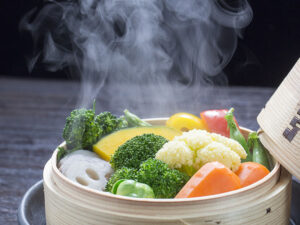
Steaming
Steaming is a gentle way to cook white vegetables, preserving their nutrients and natural flavors. It is particularly popular in various dishes of Asia, specifically China, with common Chinese white vegetables like napa cabbage, daikon radish, white turnip, and bamboo shoots often steamed.
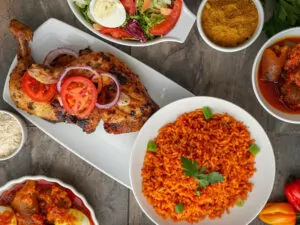
Roasting
Roasting white vegetables brings out their natural sweetness and creates a deliciously crispy texture. Vegetables like cauliflower, potatoes, and parsnips are frequently roasted in multiple European dishes and North American specialties.
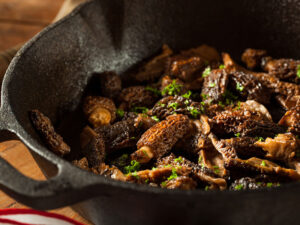
Sautéing
Sautéing white vegetables in a little oil or butter is a quick and tasty way to cook them. In Chinese food, white button mushrooms, garlic, and bean sprouts are often sautéed with soy sauce and other seasonings. Shallots and white asparagus are commonly sautéed to make different French dishes, while jicama and white corn are popular in Latin America.
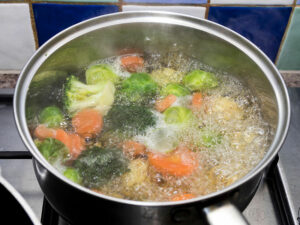
Boiling
Boiling is a simple method suitable for making mashed potatoes, soups, and stews. In European and American culinary offerings, potatoes, turnips, and white beans are often boiled. Add the vegetables to a pot of boiling water and cook until tender, then drain and use as desired.

Grilling
Grilling adds a smoky flavor to white vegetables like cauliflower, white asparagus, and onions. This method is commonly used in North American and Mediterranean specialties featuring white veggies.
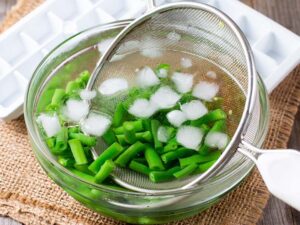
Blanching
Blanching is ideal for preparing white vegetables for salads or freezing. In European and Asian cuisine, blanching is used for vegetables like white asparagus, bean sprouts, and enoki mushrooms.
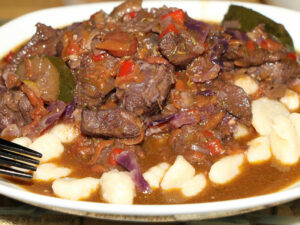
Braising
Braising combines searing and slow cooking in liquid, perfect for tougher white vegetables like fennel, kohlrabi, and rutabaga. In Chinese cuisine, braising is often used for taro and lotus root. This method is also popular for vegetables like celeriac and white pumpkin in European cuisine.
Understanding the best cooking methods can help you prepare delicious and nutritious dishes featuring white vegetables.
What Are the Most Common Dishes Featuring White Vegetables?
Below are 7 of the most common dishes with white vegetables as main ingredients:
White vegetables are more than just a side dish; they’re a powerhouse of nutrition. What’s your favorite way to enjoy them? Let me know, and be sure to explore other delicious fruits and veggies on our site!


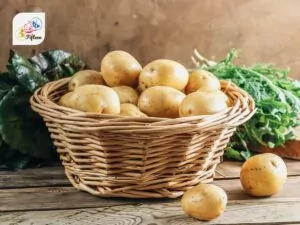
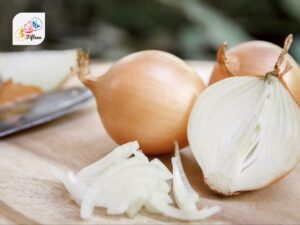
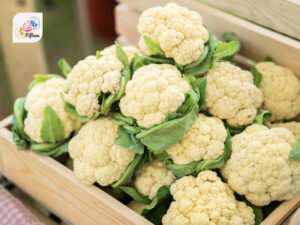
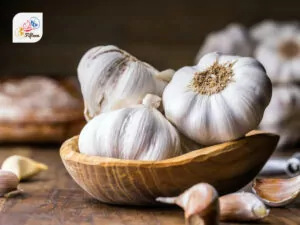
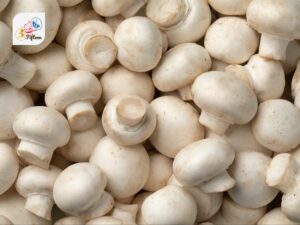
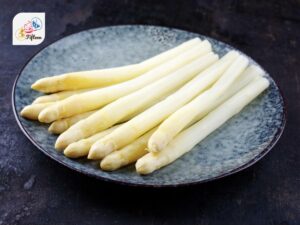
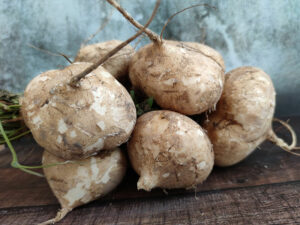
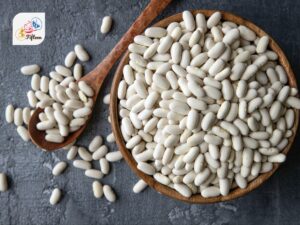
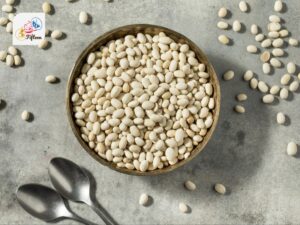
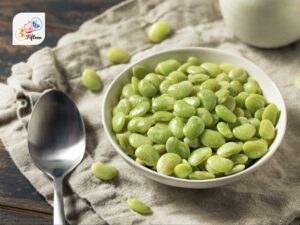
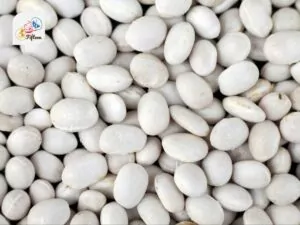
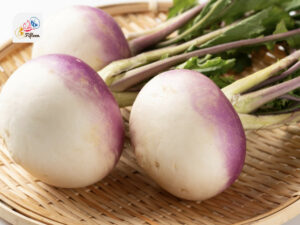
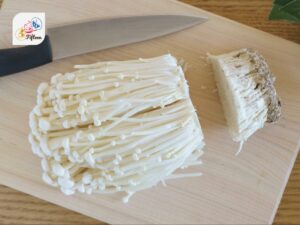
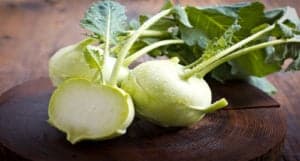
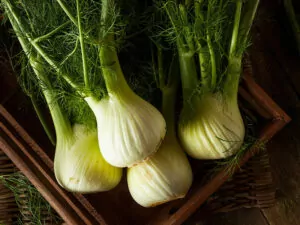
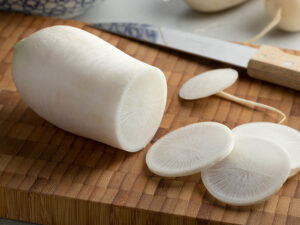
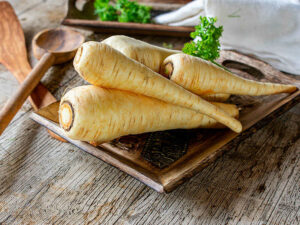
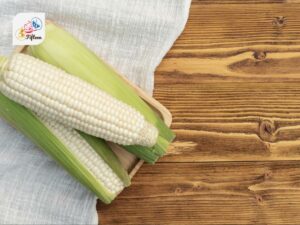
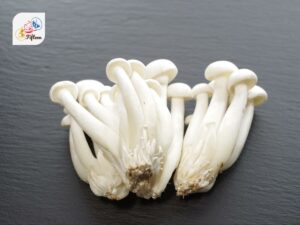
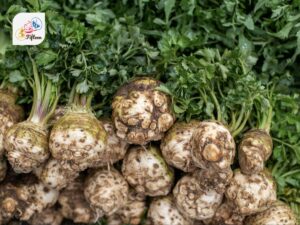

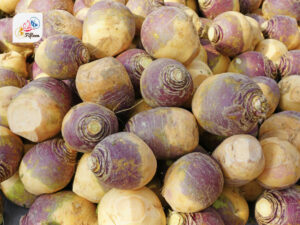
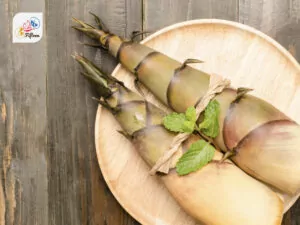
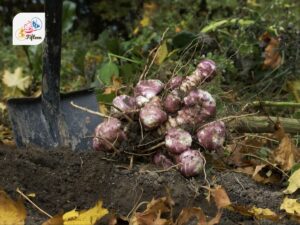
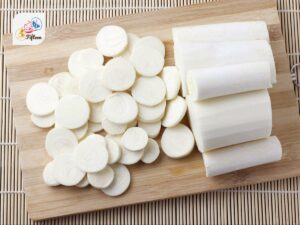
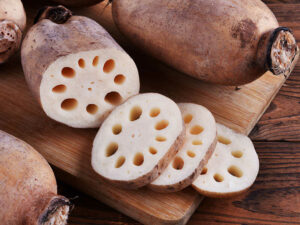
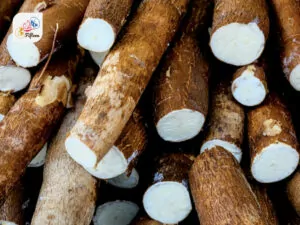
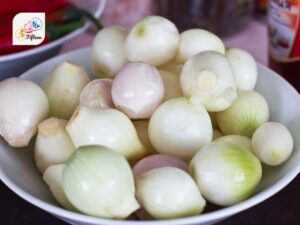
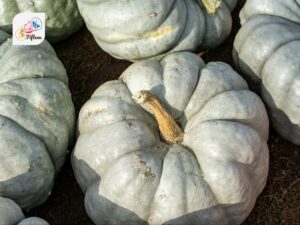
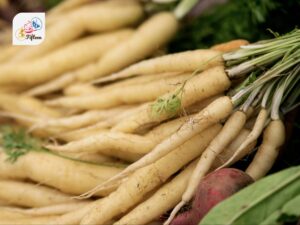
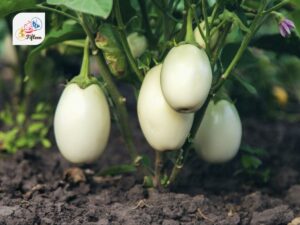
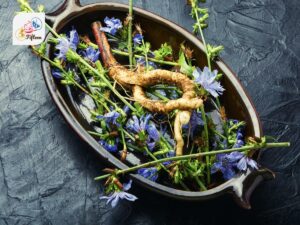
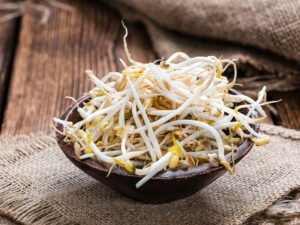
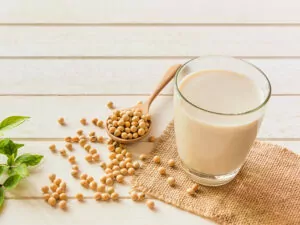
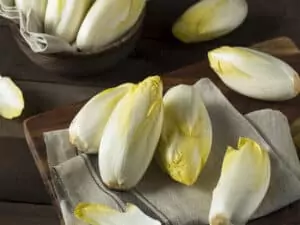
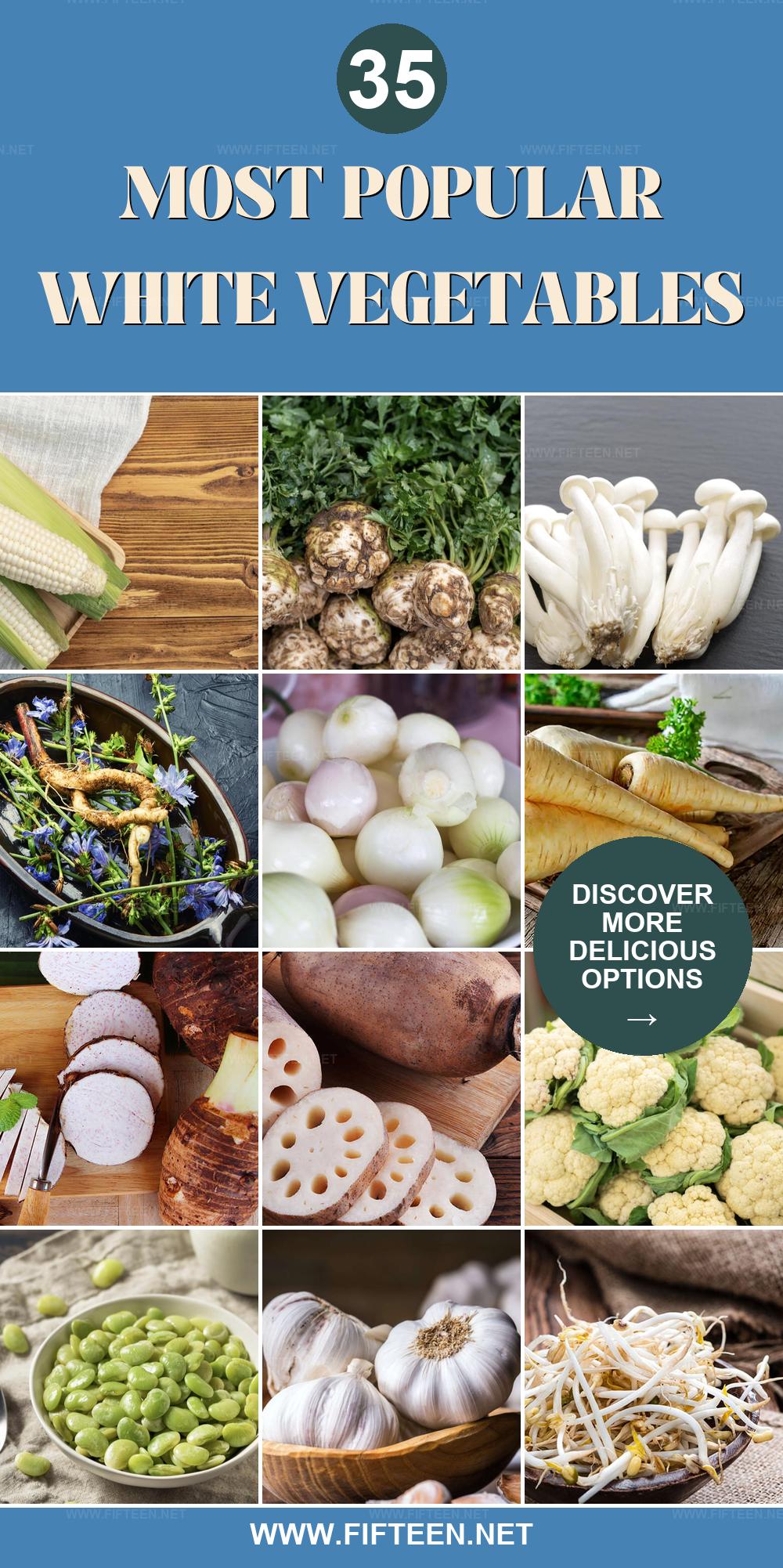
Jamie Scott
Editor in Chief, Senior Content Writer
Expertise
Home Cooking, Meal Planning, Recipe Development, Baking and Pastry, Food Editor, Cooking-video Maker, Western Food Evaluation Expert
Education
Le Cordon Bleu College of Culinary Arts
Local Community College, New York, NY
Jamie Scott is a skilled culinary expert and content creator specializing in Western cuisine. With over 15 years in the culinary field and formal training from Le Cordon Bleu, Paris, Jamie deeply understands how to blend nutrition with delicious flavors. His passion for cooking matches his commitment to making healthy eating accessible and enjoyable.
On Fifteen.net, Jamie brings a fresh perspective to classic dishes and beverages, offering readers insightful recipes, cooking tips, and a fresh view on meal planning that emphasizes taste, health, and simplicity.